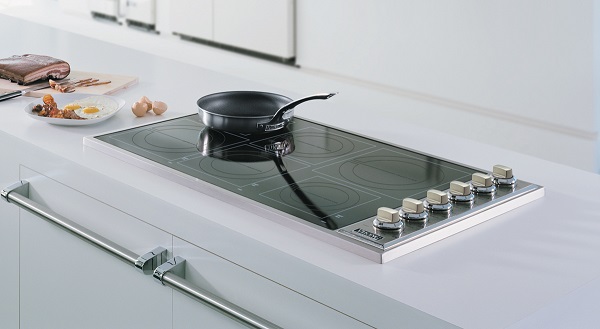Induction cookware. It sounds like fancy equipment for a science experiment. In actuality, it might help you become a better cook. In fact, cooking basically is science. Different levels of heat and cooking techniques can create a wide range of different outcomes for the same type of food. So why shouldn’t you use cookware that creates a more ideal environment for that type of culinary science to happen?
What is Induction Cookware?
First, let’s start with an introduction. Induction cooking is a process that uses an electromagnetic current to cook. It’s sort of like cooking with a Tesla Coil. You use a cooking surface that produces a magnetic field which transfers to an iron based cooking vessel. Then, because the magnetic field is switching from positive to negative very rapidly, it produces energy – just like an electric generator. Since the energy has nowhere to go, it circulates around the pot and creates heat.
Something else worth noting is that nothing, except for the pot or whatever metal thing is touching the induction coil, will heat up, so the heat stays exactly where you need it. This translates into a more efficient process for heating things because it heats much quicker and can reach much higher temperatures than an electric stove top.
Now that we’ve got the explanation out of the way, here’s why induction cookware and the process behind it can make cooking a lot better, safer, and easier.
Why Do I Need Induction Cookware?
Before you run out and replace all of your pots and pants, be advised that in order to use induction cooking methods, you need to have an induction stovetop or cooktop. That doesn’t mean that you need to immediately throw out your electric or gas stove. Many kitchenware stores sell induction cooktops that can be used on a counter, and they’re readily available through e-commerce sites as well.
Induction cooking has quite a few benefits over its stovetop counterparts. The first is that it’s a much safer cooking environment. Because the heat is extremely precise and controlled, only the induction vessel (the pot or pan you’re using to conduct heat) will heat up, meaning that touching the burner around the perimeter of the cookware won’t burn you. This is an especially strong selling point if you have children with curious minds and hands.
But safety isn’t its only selling point. Induction cooking is also more energy efficient than gas or electric options. This comes back to the precision of the heating process. Because the metal in the cookware acts as a conductor, the energy is controlled and only the parts of the pot or pan that touch the induction cooktop will heat up, meaning that no other energy is created and wasted. This also makes it more environmentally sound.
What Types of Induction Cookware Do I Need?
There are two options when it comes to getting induction cookware. You can purchase a set of induction cookware that’s specifically designed for induction cooking. These pots and pans usually comprised of a few metal layers (stainless steel and aluminum) to provide the optimal condition for conduction.
The other alternative is to stick with cast iron, aluminum, and stainless steel cookware, as they still do a good job of conducting energy. If you go this route, you’ll want to invest in a few staples, including a cast iron skillet, a sauce pan, a sauté pan, and a stock pot so that you have the tools necessary for most recipes.
Have you ever used induction cooking or do you plan to switch to an induction stovetop in the future? What do you like or dislike about it?






Since last June i have been using induction cookers. I bought Duxtop steel cookware set. Induction cookware makes my cooking precise and tasty. Happy cooking!